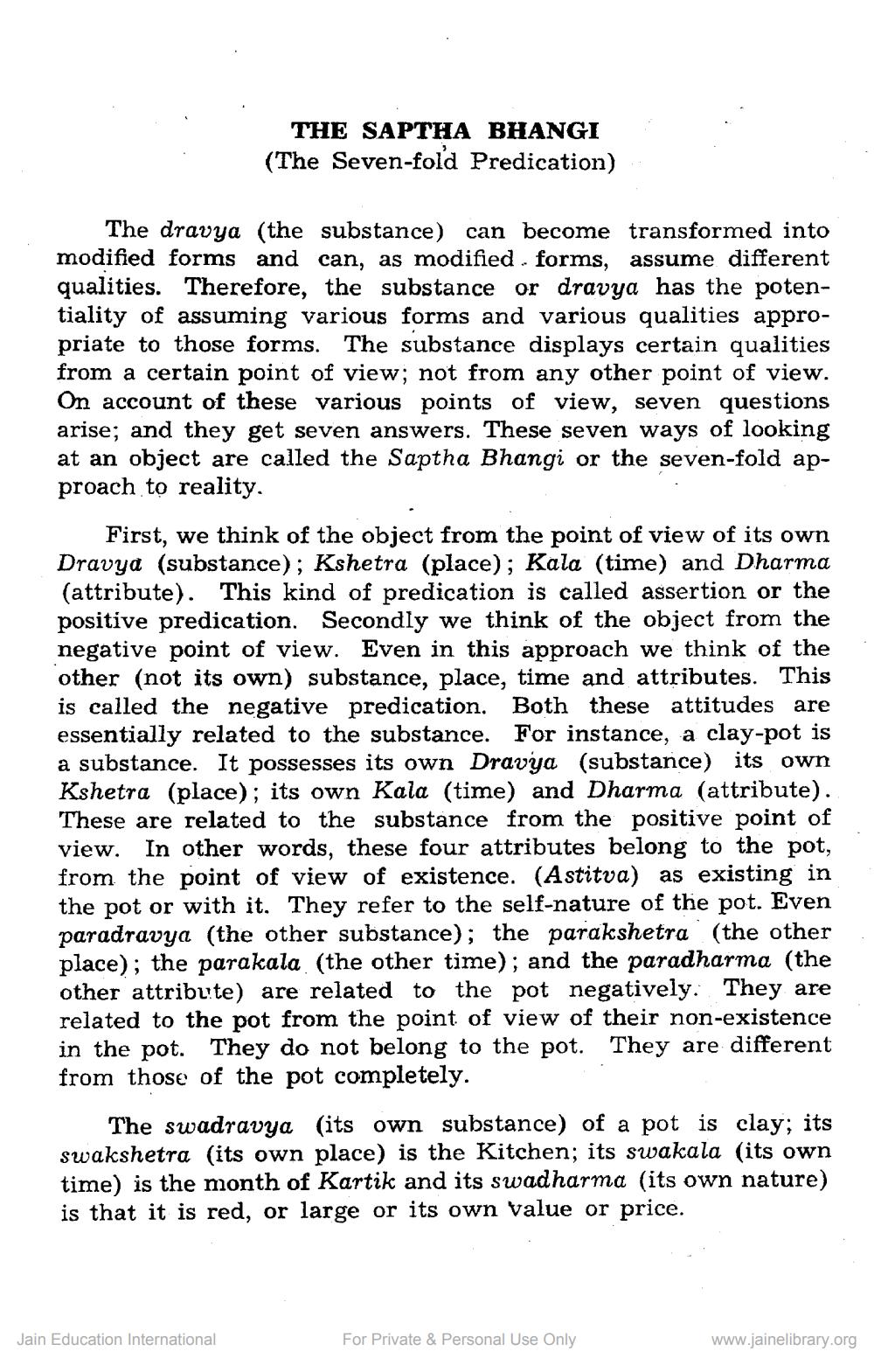________________
THE SAPTHA BHANGI (The Seven-fold Predication)
The dravya (the substance) can become transformed into modified forms and can, as modified forms, assume different qualities. Therefore, the substance or dravya has the potentiality of assuming various forms and various qualities appropriate to those forms. The substance displays certain qualities from a certain point of view; not from any other point of view. On account of these various points of view, seven questions arise; and they get seven answers. These seven ways of looking at an object are called the Saptha Bhangi or the seven-fold approach to reality.
First, we think of the object from the point of view of its own Dravya (substance); Kshetra (place); Kala (time) and Dharma (attribute). This kind of predication is called assertion or the positive predication. Secondly we think of the object from the negative point of view. Even in this approach we think of the other (not its own) substance, place, time and attributes. This is called the negative predication. Both these attitudes are essentially related to the substance. For instance, a clay-pot is a substance. It possesses its own Dravya (substance) its own Kshetra (place); its own Kala (time) and Dharma (attribute). These are related to the substance from the positive point of view. In other words, these four attributes belong to the pot, from the point of view of existence. (Astitva) as existing in the pot or with it. They refer to the self-nature of the pot. Even paradravya (the other substance); the parakshetra (the other place); the parakala (the other time); and the paradharma (the other attribute) are related to the pot negatively. They are related to the pot from the point of view of their non-existence in the pot. They do not belong to the pot. They are different from those of the pot completely.
The swadravya (its own substance) of a pot is clay; its swakshetra (its own place) is the Kitchen; its swakala (its own time) is the month of Kartik and its swadharma (its own nature) is that it is red, or large or its own value or price.
Jain Education International
For Private & Personal Use Only
www.jainelibrary.org




